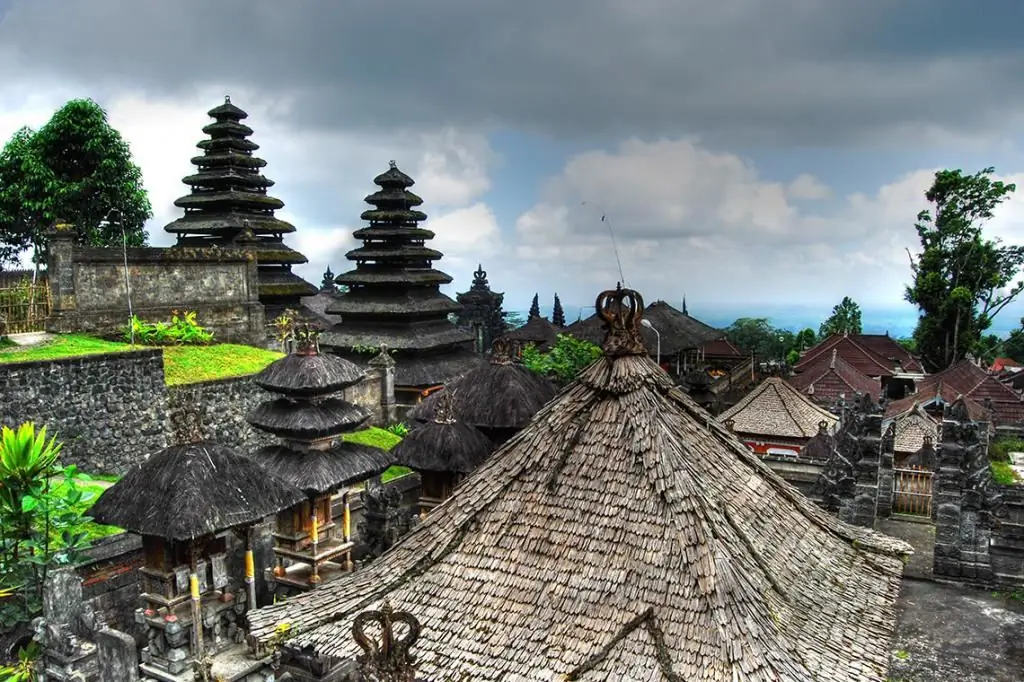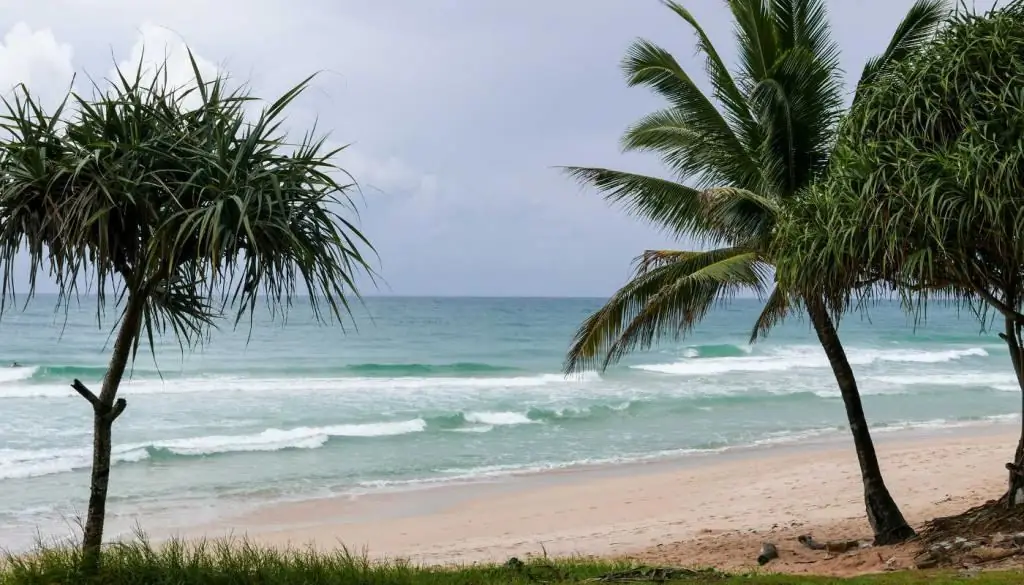- Author Harold Hamphrey [email protected].
- Public 2023-12-17 10:06.
- Last modified 2025-01-24 11:10.
The Temple of the Golden Buddha or Wat Traimit is located in Bangkok's Chinatown. Thanks to the largest statue of the legendary founder of the religion located in it, it is popular all over the world. It should be noted that Buddhism is the traditional national religion that is passed down from generation to generation in Thailand.
Sights of Bangkok

The city has 3 main attractions that are included in the tourist routes of travelers. Temples:
- reclining Buddha;
- gold is the main national treasure known far beyond Thailand;
- jade located in the Royal Palace.
From the legend it is known that Wat Traimit was built by three Chinese, this unique building is also known as the Sanhua Temple. It houses one of the largest Buddha statues in the world, which weighs 5.5 tons and is almost 4 meters high.
Initially, this temple was small in size and had no outstanding architectural features. Thanks to the prestigious name,With the support and selfless donation of the surrounding people, Wat Traimit was constantly updated and expanded. Now it is one of the most popular attractions in the country.
The Story of the Golden Buddha
The origin of the huge statue is not exactly known. The style of the sculpture suggests that it was cast during the reign of Sukhothai. At that time (from 1238 to 1438) there was the kingdom of Sukhothai, it was located on the territory of modern Northern Thailand.

For centuries, the true identity and value of the statue has not been confirmed. It was not until the 1950s that it was discovered quite by accident that the Buddha was cast in pure gold, and his eyes were made of black sapphires and white pearls. This sculpture weighed about five and a half tons, most likely, its age is about 700-800 years.
Transfer to Ayutthaya
After the defeat of Sukhothai and the emergence of a new kingdom (1350 - 1767), the statue was probably moved to the Temple of the Golden Abode of the Buddha in Ayutthaya, the capital of ancient Siam. In 1767 the city was destroyed by the Burmese invaders. To disguise the sculpture and prevent theft by the Burmese, the Golden Buddha was covered with plaster and plaster.
After the destruction of Ayutthaya, the statue remained in the city without attracting attention, but the true origin and its value were forgotten. After King Rama I declared Bangkok as the new capital, he ordered thousands of sculptures to be brought in from the northern regions of the country mentioned earlier, due to the still existing threat. Burmese, to one of the temples in the city.
Journey of the Golden Buddha
In the 1930s, the statue finally made its way to Wat Chotanaram, still covered in plaster. Then an amazing story happened to her, described in the brochure that is issued with the entrance ticket to the temple.

During the 1950s, the East Asia Company bought the land around the sanctuary for its external development. The condition for the purchase of the land was the removal of an unremarkable statue of a plaster Buddha from the building. To the surprise of the workers, it was so heavy that the crane cable broke during the lift. The sculpture fell to the ground. This all happened during the rainy season, so the Buddha was covered in mud and the workers fled in fear.
The next day, the monks who came to the statue saw glimpses of gold under the sagging plaster and broken plaster. Thus, the true value of the statue was revealed. It is assumed that it was created in India and at one time was located on the territory of the former state of Sukhothai. The sculpture is currently in the Temple of the Golden Buddha in Bangkok.
Excursion to the sanctuary
To get to Wat Traimit, you need to walk 7 minutes from Hua Lamphong metro station. At the end of Yavarot Street in Chinatown, you can see a magnificent, very atmospheric temple building with a golden roof. It is impossible not to notice him. Opening hours: from 09:00 to 17:00.

The sanctuary does not charge tourists and has a policyabsolute accessibility. It doesn't take more than an hour to visit. At the Temple of the Golden Buddha, you need to take off your shoes. This is a tradition.
Through the temple's open door, you can see the Golden Buddha sitting on a white platform watching everyone who enters the temple.
The largest Dharma shrine in Russia
The Golden Temple of Buddha Shakyamuni, which is located in Elista, is considered the largest such structure in Russia. Its construction lasted 5 months and was completed in 2005. The Kalmyks call it the Golden Temple of Dreams. It is visible from anywhere in the city. This is a large white building, made in a characteristic Buddhist style. The Kalmyks call it the Golden Abode of Buddha Shakyamuni.

The temple, founded by the Dalai Lama, is considered the largest in Europe and is the residence of the spiritual leader of Buddhism. The sword of Genghis Khan is immured in its roof.
Visitors approaching the sanctuary see the White Elder, who patronizes this area. Also, the attention of visitors can be drawn to 17 pagodas with sculptures of gilded figurines of Buddhist saints. Khurul (this is its second name) includes 7 levels.
In the Golden Buddha Temple in Elista, there is a 9-meter statue of the founder of the religion, covered with gold leaf, encrusted with diamonds.

The statue is hollow, it contains a repository of sacred items of faith. These include scrolls with sacred mantras, incense and handfuls of earth from all places.republics. On the 4th level of the temple is the residence of the President of the Republic and the head of the Kalmyk Buddhists.
The statues mentioned are definitely worth seeing.






